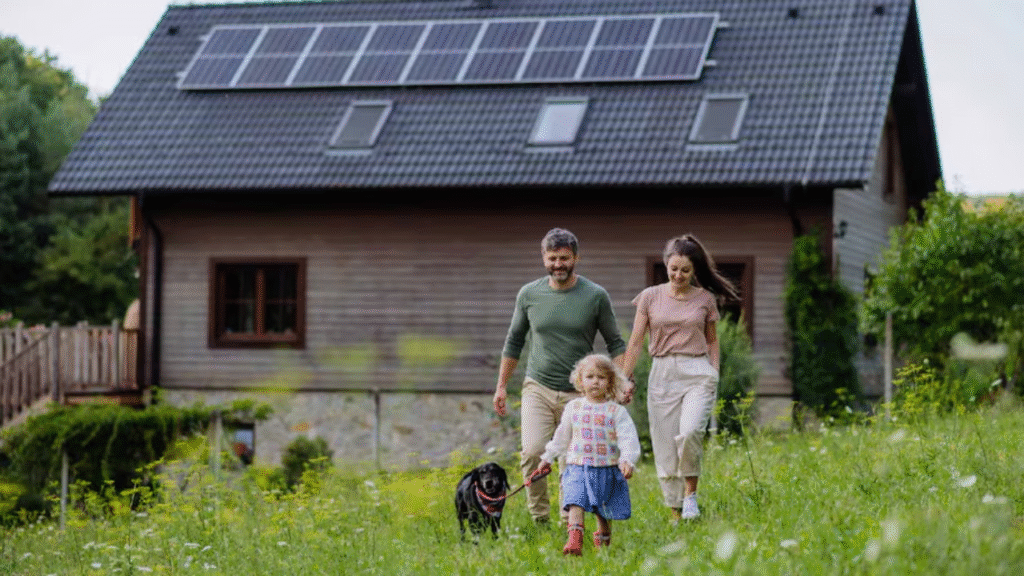The IRS has officially confirmed that homeowners can claim up to $3,200 in tax credits for eligible home energy efficiency improvements made in 2024. This comes as part of the Energy Efficient Home Improvement Credit established under the Inflation Reduction Act, which is effective from January 1, 2023, through December 31, 2032. These credits are designed to help homeowners reduce the cost of upgrading their homes to be more energy-efficient.
What You Can Claim
Homeowners can receive a percentage of the costs for specific improvements, subject to certain annual limits. The Energy Efficient Home Improvement Credit offers two types of benefits: up to $1,200 and up to $2,000 per year.
Up to $1,200 per Year
- Exterior Doors: Homeowners can claim a maximum of $500 for exterior doors, with a limit of $250 per door.
- Windows and Skylights: A maximum of $600 can be claimed for the cost of installing energy-efficient windows and skylights.
- Insulation and Air Sealing: Materials or systems for insulation and air sealing also qualify for the credit.
- Home Energy Audits: The cost of a home energy audit can be claimed up to $150.
- Certain Residential Energy Property: This includes items like furnaces, water heaters, and air conditioners, with a maximum claim of $600 per item.
Up to $2,000 per Year
- Heat Pump Water Heaters: Electric or natural gas heat pump water heaters are eligible for up to $2,000 in credit.
- Electric or Natural Gas Heat Pumps: These systems, which provide heating and cooling, are also eligible for the $2,000 credit.
- Biomass Stoves and Boilers: Homeowners can claim up to $2,000 for biomass stoves and boilers.
This means, in total, a homeowner can potentially claim up to $3,200 in credits if they install both eligible building envelope components (up to $1,200) and a qualifying heat pump (up to $2,000) in the same year.
Who Is Eligible for the Credit?
Homeowners, including renters for certain expenditures, can qualify for this credit if they make qualifying improvements to their primary residence, second homes used as residences, or newly constructed homes. However, landlords are not eligible to claim this credit.

How to Claim the Credit
To claim the Energy Efficient Home Improvement Credit, homeowners must complete Form 5695 and attach it to their tax return. This form is filed with the taxpayer’s tax return for the year in which the improvements were made. For tax year 2024, this means filing the form with the 2024 tax return, which is due in 2025.
On the tax form, there are specific lines to report the credit:
- Line 5a: For Residential Clean Energy Credit
- Line 5b: For Energy Efficient Home Improvement Credit
Homeowners should make sure they keep detailed documentation of all expenses and ensure that the improvements meet the necessary energy efficiency standards to avoid complications during the filing process. For IRS Form 5695 and instructions, visit the IRS official page.
Important Notes
- Nonrefundable Credit: The credit is nonrefundable, meaning it can reduce your tax liability to zero but will not result in a refund if the credit exceeds the amount of taxes owed.
- No Lifetime Limit: Homeowners can claim this credit each year through 2032 as long as they meet the eligibility requirements and make qualifying improvements.
- Qualified Property: It’s essential to ensure that all property installed meets the applicable energy efficiency and other requirements. For more information, check the list of qualifying products on the IRS website here.
Conclusion
The $1,500 – $3,200 tax credit for home energy efficiency improvements provides a significant opportunity for homeowners to upgrade their homes while reducing their tax liability. From insulation and windows to heat pumps and water heaters, these improvements help homeowners reduce their energy consumption and carbon footprint. By claiming this credit, homeowners can take steps toward a more energy-efficient home, saving money in the long run while contributing to environmental sustainability.









